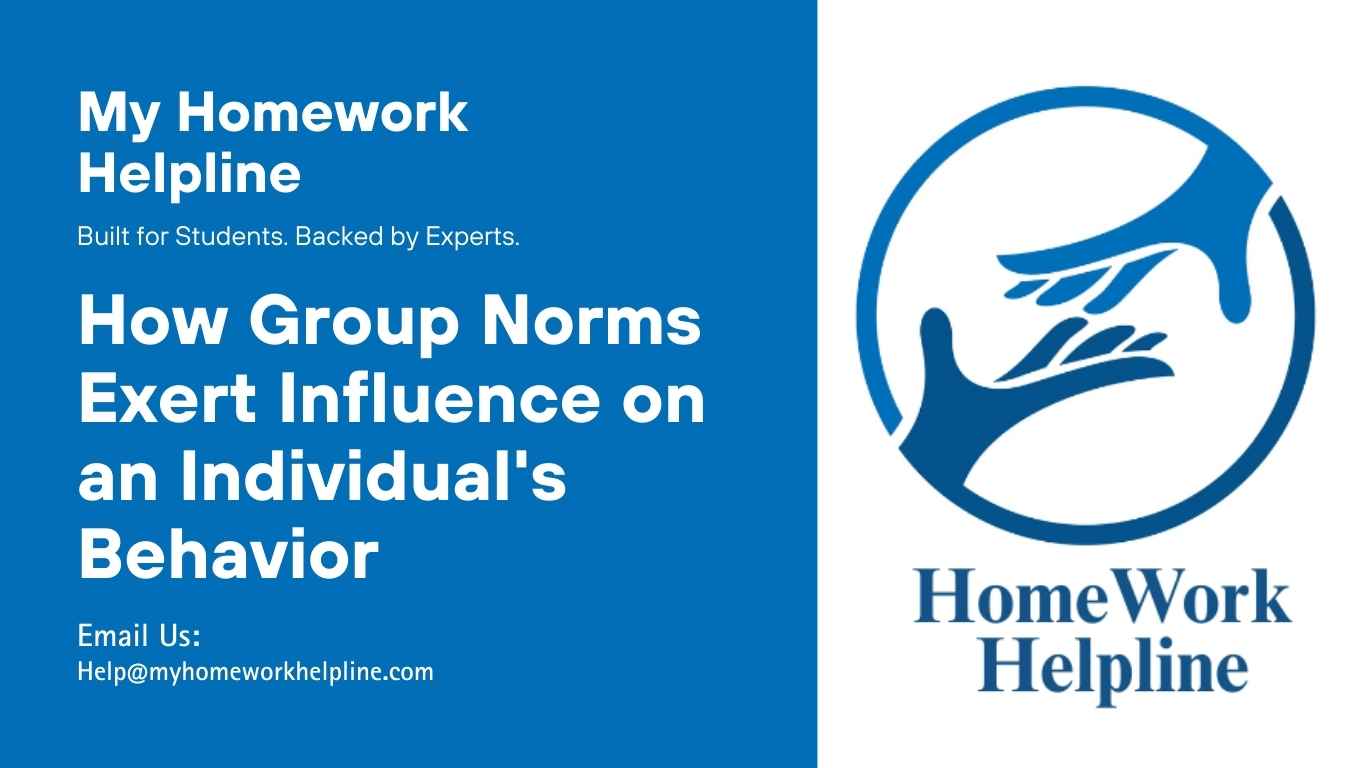How Group Norms Influence an Individual’s Behavior: Essay Sample
Teamwork is instrumental in the success of any organization as it guarantees competence and expertise. Occasionally, teams in organizations are exposed to various challenges, including negative peer pressure hindering team members’ performance (Adhikari & Agrawal, 2018). The pitfalls associated with negative peer pressure at the workplace can be avoided by advocating for one’s principles and surpassing pressures that encourage a change in behavior and attitude to the team’s standard. The paper will explore how employees can avoid pitfalls associated with negative peer pressure and why employers should use mentors to foster positive peer pressure to create effective teams.
Employees can employ several means to avoid the pitfalls of negative peer pressure. Employees can avoid participating in negative behavior in the workplace. Additionally, they can help build a positive work environment by encouraging their peers not to engage in destructive behavior (Adhikari & Agrawal, 2018). For instance, if a team member feels excluded from the team due to negative peer pressure, one must not join in the exclusion. Additionally, employees can avoid the pitfall by ensuring that all peer pressure they participate in is to encourage a positive work environment. Thus, this can be reflected by one speaking out against the exclusion of a team member. Employees must understand that countering negative peer pressure is essential in improving team morale.
When assignments feel overwhelming, My Homework Helpline is here to support your academic journey. Whether it’s preparing an essay on how group norms exert influence on an individual’s behavior or tackling complex research papers, we provide expert guidance. With our criminal justice homework assistance, you’ll gain personalized help that makes learning easier while improving grades. Start achieving academic success with us today.
Various factors impact norms in the work environment. Norms refer to acceptable behavior standards that express what one can and cannot do under a given circumstance. According to Adhikari and Agrawal (2018), emotions tend to impact norms. For instance, if a team member is upset, other team members may feed off the negative energy and become upset. Additionally, when one is exposed to negative peer pressure, they tend to become negative themselves. Therefore, peer pressure can be destructive to teams. Analysts note that destructive behavior has become a significant ethical issue for managers. The reason is that destructive behavior tends to exclude individuals who do not belong or are against the group norms, resulting in emotional distress for these members. That eventually impacts workers’ thoughts and behavior and thus low productivity. Therefore, employees can help develop a supportive culture that allows them to conform to positive peer pressure. Individuals can also avoid negative pitfalls by working to achieve the team’s goals rather than individual goals. Therefore, managers should set clear goals for teams allowing team members to use peer pressure to keep their responsibilities on track. According to Adhikari & Agrawal (2018), employees should learn to reach a compromise and thus work for the greater good of the organization. Therefore, one should feel free to disagree with the team’s actions and raise their opinions without fearing negative consequences. That is important in helping employees avoid participating in peer pressure because they are afraid to go against the social norms of the team. Employees should also know when they are being influenced to participate in negative peer pressure, thus, communicating the issue to their supervisor. That would allow the management to educate these employees in speaking up against their peers.
In given instances, group peer pressure can encourage good behavior. Managers can use peer pressure ethically to work towards achieving a team’s goals. Positive behavior must be encouraged to develop positive peer pressure hence ethical performance. Employers can use mentors to guide their employees and build effective teams (Van Dam et al., 2018). Mentors use guided conversations and observations to offer feedback on performance and develop employee talent. According to Van Dam et al. (2018), the general characteristics of positive mentoring include mentors making long-term commitments to work together over time to build trust, setting high but fair expectations for their partners and themselves, and offering consistent communication to build strong relationships. Mentoring is essential to business managers as it helps face competition and attract and retain talent at all business levels.
Additionally, mentors are central to improving accountability, motivation, and performance and increasing employee worker competence by creating awareness while building relationships with other employees. Mentoring is instrumental in benefiting all employees, particularly during the transition. Besides the institution and employees, mentors also benefit from mentoring as they gain professional and personal satisfaction from helping others. The mentors also tend to gain recognition from the agency and their peers for contributing expertise and time (Van Dam et al., 2018). Mentors can also improve their interpersonal skills by sharing the necessary skills required to effectively manage and supervise employees and having the opportunity to focus their energy outside of themselves. Mentors can also deepen their understanding of employees’ experiences and thus are prepared to take greater responsibilities and leadership roles.
In conclusion, team member unity is instrumental in ensuring a team’s success. However, teams tend to fail when employees participate in negative peer pressure. Employees can avoid negative peer pressure by maintaining their principles and speaking against the pressure. Additionally, mentoring can assist in dealing with peer pressure as it encourages positive behavior. Employers can use mentors at different levels of their organization to educate their employees and establish effective teams.
Reference
Adhikari, B. K., & Agrawal, A. (2018). Peer influence on payout policies. Journal of corporate finance, 48, 615-637.
Van Dam, L., Smit, D., Wildschut, B., Branje, S. J. T., Rhodes, J. E., Assink, M., & Stams, G. J. J. (2018). Does natural mentoring matter? A multilevel meta‐analysis on the association between natural mentoring and youth outcomes. American journal of community psychology, 62(1-2), 203-220.

